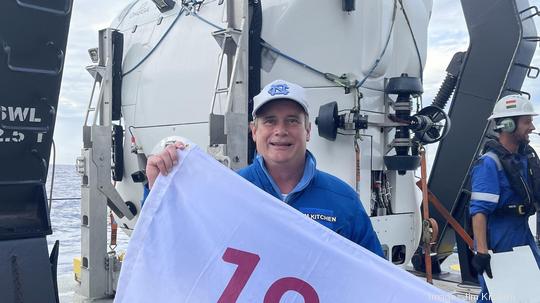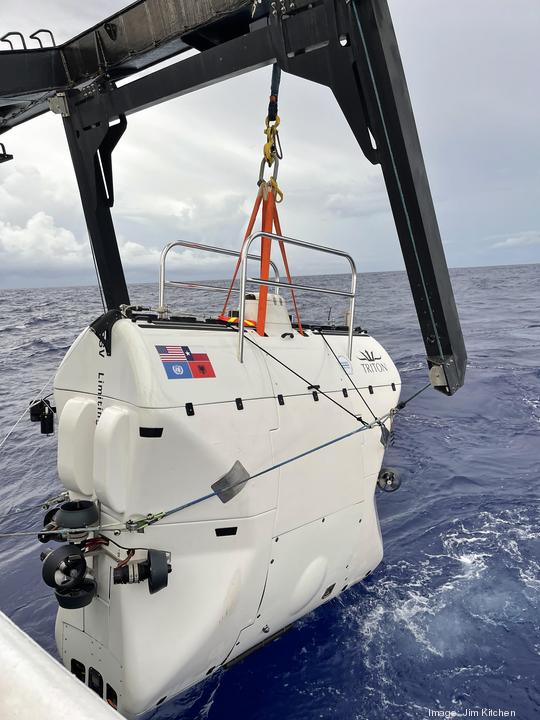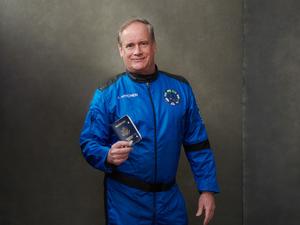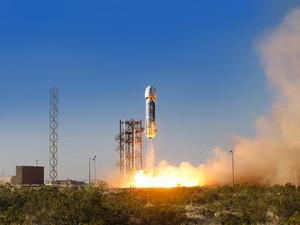
Just three months after his space flight, a UNC-Chapel Hill entrepreneurship professor has journeyed somewhere even more exclusive – the deepest-known point of seabed on Earth.
Jim Kitchen, who in March journeyed 65 miles above the planet on a Blue Origin flight — the fourth crewed flight for Amazon (NASDAQ: AMZN) founder Jeff Bezos’ space company — recently returned from a dive to an area called Challenger Deep in the Mariana Trench in the Pacific Ocean.
Kitchen said his adventures — from space to the deep, deep sea — are about his students. He returns to the classroom in 30 days armed with new life lessons. “It’s to be able to teach my students to pursue their dreams and push boundaries and live fun and adventurous lives, just continue to push, that’s what drives me,” he said.
Kitchen said his journey to the bottom of the ocean — Challenger Deep is more than 6.5 miles below sea level — in some ways was comparable to going to space.
The dive lasted must longer — four hours each way and about 2.5 hours combing the seafloor — than the trip to space, which lasted only minutes.
It was July 5 when he boarded the titanium submarine in Guam. It was hot and humid, in the 80s. But within just a few minutes, all light disappeared and temperatures began to plummet. On the way down, Kitchen passed the time by giving his pilot entrepreneurship advice.
“He kidded with me … that was the world’s deepest entrepreneurship lecture,” Kitchen said.
At the bottom — just under 7 miles deep — the LED lights switched on.
“There we were … it just got really, really cool,” he said.
There are three “pools” in the Mariana Trench — the eastern, central and western pools. Kitchen and his pilot were on the eastern part of the eastern pool “where no human had ever explored.”

He didn’t know what to expect. Would it just be a silty seafloor of fish scales? A wide-open nothingness?
When the LED lights switched on, he saw white seafloor. As the submarine followed its path, the seafloor gave way to giant boulders — a “huge rubble field” — as they reached the area where massive tectonic plates came together.
That’s when the “crazy life forms” emerged, like the thing that resembled a “chicken bone” with a worm in it — which a scientist on the surface was unable to identify. Giant, globby things that looked like Man-of-Wars floated. Shrimp-like creatures, that are mostly shell to withstand the pressure, scuttled by. From the portholes, he could see bacterial mats — “like a bath mat, but a bacterial mat.”
“There’s no sunlight, there’s no oxygen,” he said. “It’s really cold down there but there’s this crushing pressure … it’s really not hospitable to most life.”
The bacteria are not photosynthetic. Instead, they are chemosynthetic, using the materials in the water and in the rocks to sustain life. And that’s where the space comparisons get really interesting.
“If there’s life out there … it’s mostly likely that this is the type of life that would exist,” he said.
“Space was just mind numbing, but this was like being in a lunar rover which was just as equally mesmerizing,” Kitchen said.
In all, 24 people have been to the moon — but just 20 this deep on the seafloor, Kitchen said.
Kitchen is looking for his next adventure — and the possibilities of an unexplored seafloor are intriguing, he said. But so are the South and North poles.
“I’ve just got to take some time and reflect … because this has been just a heck of a year,” he said.
Kitchen, who has also traveled to every country, paid for the deep-sea trip — though he declined to say how much, calling it an honor to help underwrite some of the cost of scientific exploration.





